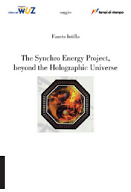In physics, technicolor models are theories beyond the Standard Model (sometimes, but not always, GUTs) which do not have a scalar Higgs field. Instead, they have a larger number of fermion fields than the Standard Model and involve a larger gauge group. This larger gauge group is spontaneously broken down to the Standard Model group as fermion condensates form.
The idea of technicolor is to build a model in which the sort of dynamics we see in quantum chromodynamics (QCD) can be used to explain the masses of the W and Z bosons. In QCD, there are quarks that feel both the weak interaction and the strong interaction. The strong interaction binds them together in condensates which spontaneously break electroweak symmetry. In fact, QCD itself gives masses to the W and Z bosons, but these masses are tiny compared to the observed masses. Technicolor uses a QCD-like theory at a higher energy scale to give the observed masses to the W and Z bosons. The simplest models are at odds with precision tests of the electroweak interactions. Recently, however, a large number of Minimal Walking Models have been constructed passing the electroweak precision tests. The simplest models are known as Minimal and Ultra Minimal walking technicolor. The ultra minimal model is the first explicit model of technicolor featuring a natural candidate for cold Dark Matter.
The idea of technicolor is to build a model in which the sort of dynamics we see in quantum chromodynamics (QCD) can be used to explain the masses of the W and Z bosons. In QCD, there are quarks that feel both the weak interaction and the strong interaction. The strong interaction binds them together in condensates which spontaneously break electroweak symmetry. In fact, QCD itself gives masses to the W and Z bosons, but these masses are tiny compared to the observed masses. Technicolor uses a QCD-like theory at a higher energy scale to give the observed masses to the W and Z bosons. The simplest models are at odds with precision tests of the electroweak interactions. Recently, however, a large number of Minimal Walking Models have been constructed passing the electroweak precision tests. The simplest models are known as Minimal and Ultra Minimal walking technicolor. The ultra minimal model is the first explicit model of technicolor featuring a natural candidate for cold Dark Matter.
Technical details:
There are many technicolor models with very different features, but the general idea of electroweak symmetry breaking by strong interactions works as follows. At high energies, we have a gauge group G x H with the Standard Model gauge group contained within G. As we run down the renormalization group, the coupling strength for H goes up. We have two chiral fermions (left-handed Weyl fermions) ψ1 and ψ2 with the G x H representations (ρ1,r) and (p2,r) respectively where r is a nontrivial representation of H and at least one of ρ1 or ρ2 transforms nontrivially under G. The strong coupling strength for H causes chiral symmetry breaking to occur. In other words, the H-invariant composite field ψ1ψ2, which transforms as p1(x) p2 acquires a vev dynamically. If this vev is not G-invariant, this will lead to spontaneous breaking of G without a Higgs field. Depending upon the model, this might be used to break G to the Standard Model or maybe G is the Standard Model group itself and this mechanism is used to break the electroweak symmetry dynamically. In addition, H may become confined, causing it to disappear at low energies. This model would also explain the hierarchy problem since H might start off with a small coupling strength at really high energies and increase logarithmically over many orders of magnitude before it gets large enough to trigger the dynamical symmetry breaking.
Extended technicolor:
This model is simplistic, because it assumes that the Standard Model fermions are technineutral (otherwise, they would be confined); however, if they are technineutral, then we cannot explain the origin of the Standard Model fermion masses from the effective coupling of these fermions to the chiral symmetry breaking order parameter.
Extended technicolor assumes that the high energy gauge group is not a direct product G x H but some unified gauge group K which is broken spontaneously to G x H at some energy scale above the technicolor scale. That way, we have gauge-mediated couplings between the Standard Model fermions and the techniquarks which can give rise to Standard Model fermion masses. In addition, it allows technibaryons to decay into Standard Model particles. The Schwinger model is a toy model of this type.
The large mass of the top quark generally forces one to consider technicolor dynamics to involve the top directly. A Top quark condensate driven by Topcolor offers a remedy to several problems besetting Technicolor.
Extended technicolor assumes that the high energy gauge group is not a direct product G x H but some unified gauge group K which is broken spontaneously to G x H at some energy scale above the technicolor scale. That way, we have gauge-mediated couplings between the Standard Model fermions and the techniquarks which can give rise to Standard Model fermion masses. In addition, it allows technibaryons to decay into Standard Model particles. The Schwinger model is a toy model of this type.
The large mass of the top quark generally forces one to consider technicolor dynamics to involve the top directly. A Top quark condensate driven by Topcolor offers a remedy to several problems besetting Technicolor.
















Nessun commento:
Posta un commento